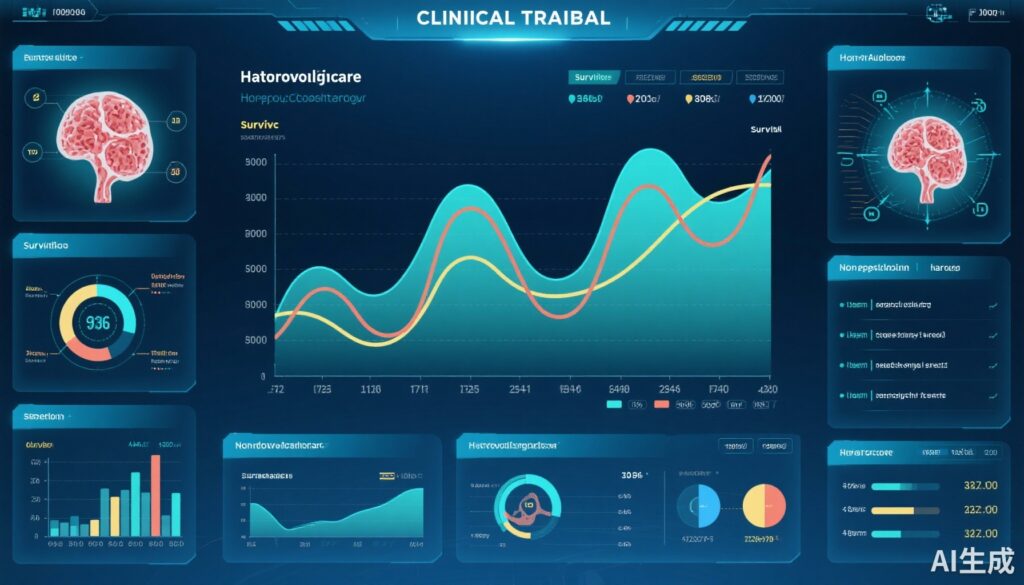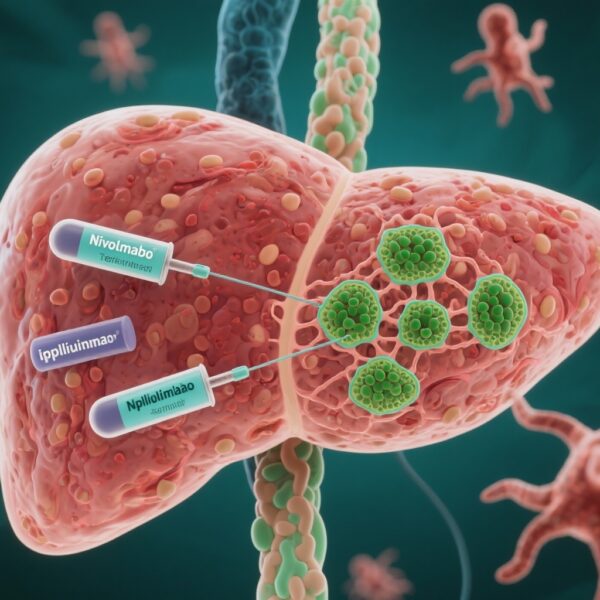Introduction
Hepatocellular carcinoma (HCC) remains a leading cause of cancer-related mortality worldwide despite advances in systemic therapies. Immunotherapy-based treatments have transformed the therapeutic landscape, but their unique survival dynamics challenge traditional clinical trial methodologies. Particularly, the assumption of proportional hazards (PH) underlying conventional survival analysis is frequently violated, leading to non-proportional hazards (NPH) between study arms. This results in discrepancies between interim analyses (IA) and final analyses (FA) of pivotal phase III trials. Addressing NPH is crucial to ensure appropriate interpretation of trial data, accurate efficacy assessment, and sound regulatory and clinical decisions.
Background and Disease Burden
Hepatocellular carcinoma accounts for a significant global cancer burden, often diagnosed at advanced stages where systemic therapy is required. Over the past decade, immune checkpoint inhibitors and combination immunotherapies have introduced durable responses but also complex survival patterns not adequately captured by classic proportional hazards models. The standard log-rank test and Cox proportional hazards regression, widely used in randomized clinical trials (RCTs), assume a consistent hazard ratio (HR) over time. When this assumption is violated, statistical inference may be misleading, risking premature trial termination or inaccurate efficacy conclusions.
Study Design and Methods
This critical review incorporates an analysis of 20 pivotal phase III RCTs in HCC conducted from 2008 to 2024, focusing on those testing immunotherapies. The Grambsch-Therneau test was employed to evaluate the proportional hazards assumption. For trials exhibiting NPH, three distinct hazard patterns were identified: diminishing treatment effects over time, delayed onset of clinical benefit, and crossing hazards where treatment and control arms alternate in survival advantage.
To optimize interim analyses in the presence of NPH, an adaptive timing strategy was proposed: scheduling IA at twice the estimated median survival time of the control arm or after reaching 60% of target events. Furthermore, alternative statistical approaches were applied to evaluate treatment effects robustly. These included the MaxCombo test, which combines weighted log-rank statistics to detect differences under various non-proportional scenarios; restricted mean survival time (rRMST), which quantifies average survival over fixed time horizons; and piecewise hazard ratio (pHR) models that estimate hazard ratios in defined time intervals.
Key Findings
Among the analyzed phase III trials, non-proportional hazards were observed exclusively in four immunotherapy trials (20%), demonstrating the complexity introduced by newer agents.
1. Diminishing Effects Pattern: The IMbrave050 and LEAP-012 trials showcased early separation of survival curves favoring experimental arms, which narrowed or converged over time. In IMbrave050, the interim positive signal (MaxCombo p=0.02, rRMST at 12 months 1.11, p<0.001) was not confirmed at final analysis (MaxCombo p=0.33, rRMST at 36 months 1.08, p=0.08). Piecewise HRs indicated a strong early benefit (HR 0.59 before 12 months) lost after 12 months (HR 1.12).
In contrast, LEAP-012 maintained consistent positive outcomes at interim and final analyses (MaxCombo p<0.001 at 12 and 24 months), with rRMST improvements of 20%-27%, highlighting robust late survival benefits.
2. Delayed Effects Pattern: The HIMALAYA trial illustrated delayed separation of survival curves, with non-significant rRMST differences at 12 months (1.04, p=0.13) evolving into significant benefit at 36 months (1.15, p=0.004). The MaxCombo test supported this pattern, confirming long-term survival gains.
3. Crossing Hazards Pattern: CheckMate 9DW demonstrated crossing survival curves, initially favoring the control arm but later showing an advantage for immunotherapy. rRMST analysis echoed this with near null effect at 12 months (0.95, p=0.07) and significant benefit at 36 months (1.12, p=0.03).
These findings underscore the insufficiency of conventional interim analytical frameworks in the context of NPH, exemplified by the discordant results in IMbrave050 where premature IA interpretation risked misleading conclusions.
Expert Commentary
The presence of NPH, especially in immunotherapy trials where biological effects may emerge late or wane over time, necessitates rethinking statistical methods and trial design. The MaxCombo test offers heightened sensitivity by accommodating varying hazard patterns, while rRMST provides a direct measure of average survival benefit relevant to clinicians and patients. Piecewise HRs elucidate temporal dynamics of treatment efficacy, guiding personalized treatment strategies.
However, these methods also require careful consideration regarding predefined time windows for analysis and potential complexities in interpretation. Regulatory bodies and practitioners need consensus guidelines to integrate these methods transparently into trial assessments and clinical decision-making.
Conclusion
Non-proportional hazards pose critical challenges in interpreting survival outcomes of phase III hepatocellular carcinoma trials, particularly those involving immunotherapy. Discrepancies between interim and final analyses can misguide early trial termination or misestimate benefits, impacting patient care and drug approval.
Implementing tailored strategies—delayed or event-driven interim analyses, use of MaxCombo tests, rRMST calculations, and piecewise hazard modeling—enhances robustness and interpretability of trial results. These approaches support more accurate efficacy evaluations and informed regulatory and clinical decisions, ultimately improving therapeutic strategies for HCC.
Future research should focus on standardizing these methodologies and integrating translational biomarkers to predict and accommodate NPH, refining personalized medicine approaches in oncology.
Funding and Clinical Trials Registration
The referenced studies include multicenter multinational phase III trials funded by pharmaceutical and governmental sources. Specific trial registrations can be found individually (e.g., NCT numbers for IMbrave050, LEAP-012, HIMALAYA, CheckMate 9DW).
References
Mauro E, de Castro T, Zeitlhoefler M, Hackshaw A, Lee M, Meyer T, Singal AG, Llovet JM. Strategies to address non-proportional hazards between survival curves – Lessons from phase III trials in hepatocellular carcinoma. J Hepatol. 2025 Sep 22:S0168-8278(25)02492-4. doi: 10.1016/j.jhep.2025.08.042. Epub ahead of print. PMID: 40992574.
Additional references on NPH and survival analyses in oncology can be explored through current oncology and biostatistics literature.



